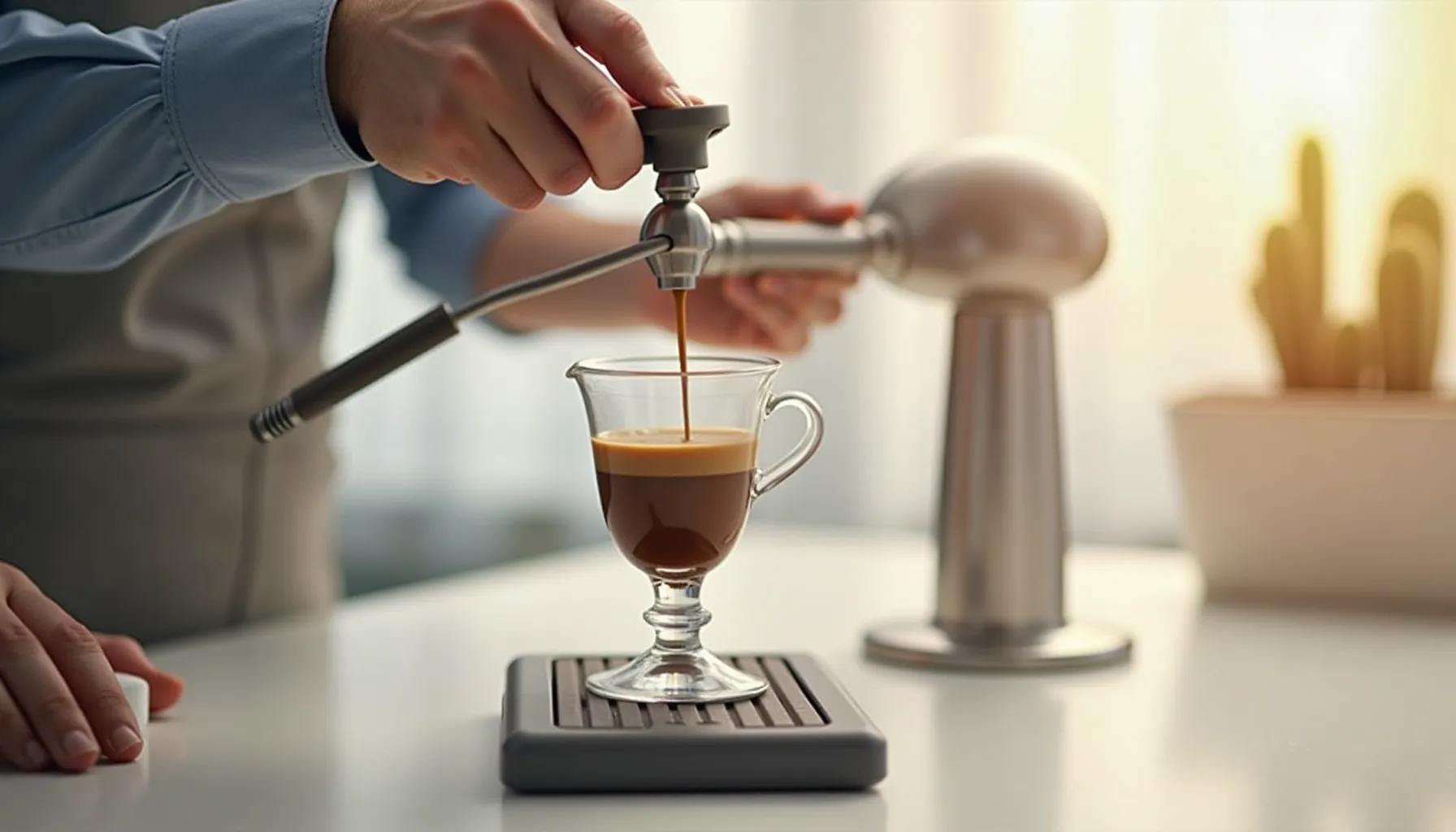Creating a coffee shop business plan is your first step towards turning that caffeine-fueled dream into reality. As someone who's helped countless entrepreneurs navigate this journey, I can tell you it's not just about jotting down ideas on a napkin.
It's about crafting a roadmap that'll guide you through the twists and turns of starting your own coffee haven. Think of it as brewing the perfect cup - it takes the right ingredients, precise measurements, and a dash of passion.
In this guide, we'll walk through each essential element of your coffee shop business plan. From nailing your unique concept to crunching those all-important numbers, we've got you covered. So grab your favorite mug, and let's start planning your path to coffee shop success!

Essential Elements for Your Coffee Shop Blueprint
Before we dive into the nitty-gritty of crafting your coffee shop business plan, let's gather the tools you'll need. Think of these as the beans, grinder, and espresso machine of your planning process - essential for brewing up a robust strategy.
First up, you'll want a solid business plan template or software. This will serve as your roadmap, guiding you through each crucial section. There are plenty of free options online, or you might consider investing in a more comprehensive tool if you're feeling fancy.
Next, arm yourself with market research tools. These will help you understand your potential customers and competition. Think surveys, demographic data, and industry reports. The National Coffee Association's annual report is a goldmine of information.
Don't forget financial projection spreadsheets. These are crucial for crunching those all-important numbers. You can find templates online or create your own in Excel. Finally, grab a SWOT analysis worksheet to help you identify your strengths, weaknesses, opportunities, and threats.
Crafting Your Coffee Shop Vision
1. Brewing Your Executive Summary
Let's kick things off with your executive summary. This is where you'll distill the essence of your coffee shop into a potent shot of information. Think of it as your elevator pitch, but on paper.
Start by clearly stating your mission. Are you aiming to be the go-to spot for third-wave coffee enthusiasts, or the cozy neighborhood hub where everyone knows your name? Don't forget to outline your objectives - maybe you're dreaming of multiple locations within five years?
Next, highlight what makes your coffee shop unique. Maybe it's your commitment to sourcing beans directly from farmers, or your innovative brewing methods. Whatever it is, make it shine here.
- Tip: Keep it concise but compelling. Aim for no more than two pages.
- Warning: Don't get too into the weeds here. Save the nitty-gritty details for later sections.
2. Pouring Out Your Business Description
Now, let's dive deeper into what your coffee shop is all about. Paint a vivid picture of your concept and atmosphere. Are we talking industrial chic with exposed brick, or a cozy nook with overstuffed armchairs?
Outline your products and services. Will you be serving up single-origin pour-overs, or focusing on perfectly crafted espresso drinks? Don't forget to mention any food offerings or retail items you plan to sell.
Finally, explain your business structure. Are you going solo as a sole proprietor, or teaming up with partners in an LLC? This is also a great place to highlight any relevant experience you bring to the table.
- Tip: Be specific about your offerings, but leave room for future adjustments.
- Warning: Ensure your concept aligns with your target market and location.
3. Sifting Through Market Analysis
Time to put on your detective hat and dig into some market research. Start by identifying your target market. Are you catering to busy professionals, students, or weekend brunch crowds?
Next, scope out your competition. Visit other coffee shops in your area and take notes. What are they doing well? Where could they improve? This is your chance to find your niche.
Don't forget to discuss industry trends. For instance, did you know specialty coffee consumption has grown 20% over the past decade? Use data like this to support your business case.
- Tip: Use both quantitative data and qualitative observations in your analysis.
- Warning: Be objective in your competitive analysis. Overconfidence can lead to blind spots.
4. Roasting Your Marketing Strategy
Now, let's talk about how you'll get the word out. Start by developing your brand identity. What's your logo look like? What colors and fonts will you use? Your brand should reflect your coffee shop's personality.
Outline your promotional tactics. Will you be leveraging social media influencers? Hosting latte art competitions? Don't forget about loyalty programs - they can be great for encouraging repeat visits.
Finally, set a marketing budget and goals. How much can you afford to spend, and what results do you expect to see? Be realistic, but don't be afraid to dream big.
- Tip: Consider partnering with local businesses or events for cross-promotion.
- Warning: Don't spread yourself too thin. Focus on a few key marketing channels at first.
5. Grinding Out Operational Details
This is where we get into the nuts and bolts of running your coffee shop. Start by describing your day-to-day operations. What time will you open? How will you handle rushes?
Next, outline your staffing needs. How many baristas will you need? What about managers? Don't forget to include a management structure if you're planning to hire employees.
Finally, detail your equipment and inventory requirements. From espresso machines to point-of-sale systems, list everything you'll need to get up and running.
- Tip: Create standard operating procedures for consistency in quality and service.
- Warning: Don't underestimate your equipment needs. Quality gear is an investment in your success.
6. Extracting Financial Projections
Now for the part that makes many entrepreneurs sweat - the numbers. Start by estimating your startup costs. The average range for opening a coffee shop is $80,000 to $300,000, but your mileage may vary.
Next, create sales forecasts and calculate your profit margins. The industry average gross profit is around 60%, but aim to be conservative in your estimates.
Finally, develop cash flow projections and a break-even analysis. This will help you understand when you can expect to start turning a profit.
- Tip: Use industry benchmarks to sanity-check your projections.
- Warning: Be prepared for unexpected expenses. It's always wise to have a financial buffer.
7. Blending It All Together
You're in the home stretch! Now it's time to review and refine each section of your plan. Make sure everything flows logically and that there are no contradictions between sections.
Ensure consistency throughout the plan. Your financial projections should align with your marketing strategy, which should support your overall business concept.
Lastly, prepare an appendix with any supporting documents. This might include your resume, detailed market research, or letters of intent from potential partners or suppliers.
- Tip: Have someone else read through your plan. Fresh eyes can catch errors or inconsistencies you might have missed.
- Warning: Don't rush this final stage. A polished, professional plan can make all the difference when seeking funding or partners.

Your Recipe for Coffee Shop Success
Crafting a coffee shop business plan is like creating the perfect blend - it takes time, patience, and a keen understanding of your ingredients. We've walked through each crucial step, from distilling your vision in the executive summary to crunching numbers in your financial projections.
Remember, your business plan is more than just a document; it's a living roadmap that will guide your decisions and help you navigate challenges. As you move forward, don't be afraid to revisit and refine your plan. The coffee industry is dynamic, and your ability to adapt will be key to your success.
Just as every great barista knows that the perfect cup of coffee starts with quality beans, your thriving coffee shop begins with a well-crafted business plan. So, take a deep breath, embrace the process, and get ready to pour your passion into every page. Your coffee shop dream is brewing - now it's time to serve it up!
Additional Tips/FAQs
- How long should my coffee shop business plan be?
Typically, 20-30 pages is sufficient, but quality matters more than quantity. Ensure each section is thorough yet concise.
- Should I hire a professional to write my business plan?
While it's beneficial to write it yourself for deeper understanding, consider hiring a consultant for review or assistance with complex financial projections.
- How often should I update my business plan?
Review and update your plan at least annually, or more frequently if you're experiencing rapid growth or significant market changes.
- What are some common mistakes to avoid when writing a coffee shop business plan?
Avoid overly optimistic financial projections, neglecting market research, or failing to clearly define your unique selling proposition.
- Can I use my business plan to secure funding?
Absolutely! A well-crafted business plan is essential when approaching banks, investors, or applying for small business loans.












